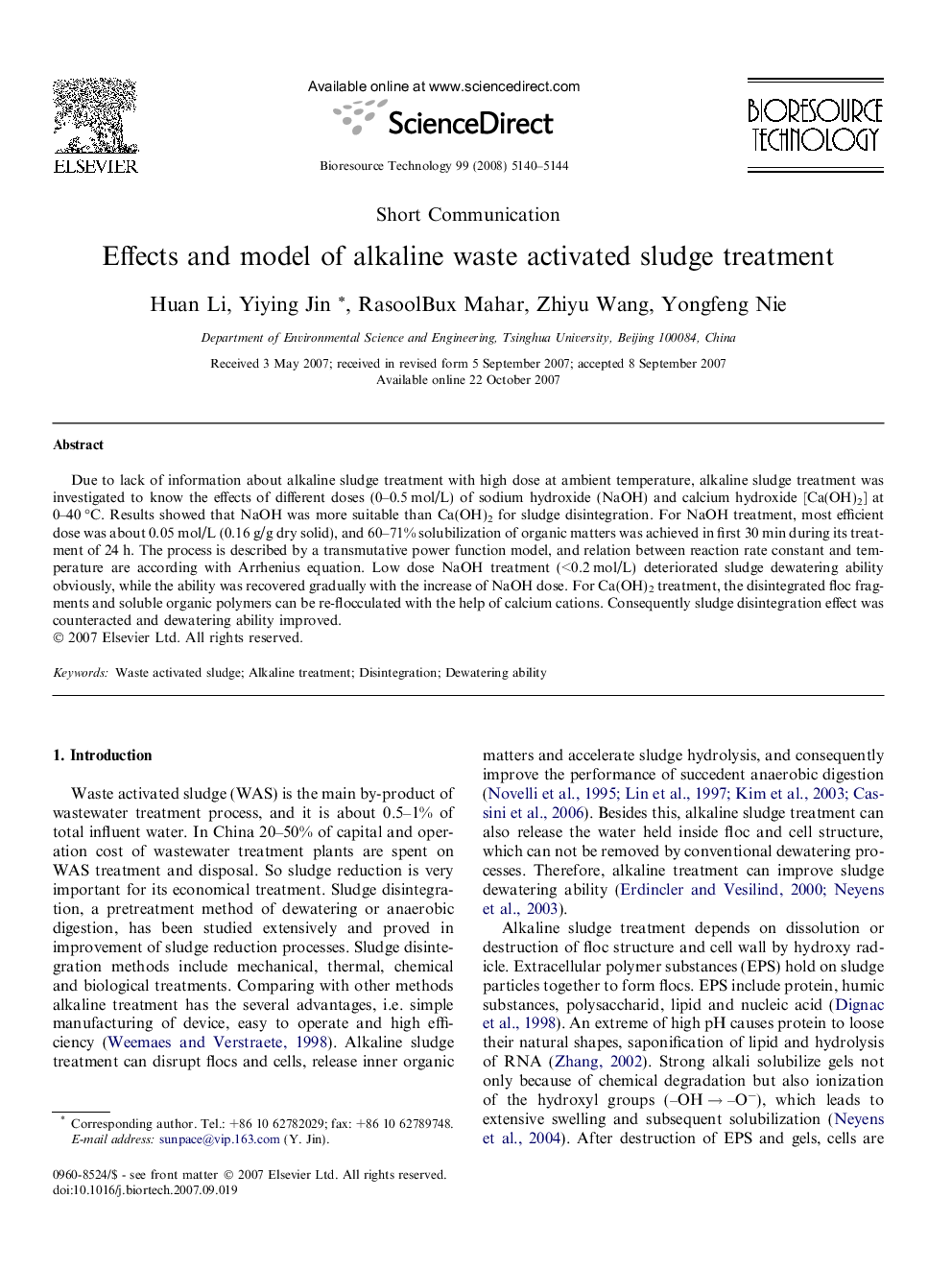| Article ID | Journal | Published Year | Pages | File Type |
|---|---|---|---|---|
| 685632 | Bioresource Technology | 2008 | 5 Pages |
Due to lack of information about alkaline sludge treatment with high dose at ambient temperature, alkaline sludge treatment was investigated to know the effects of different doses (0–0.5 mol/L) of sodium hydroxide (NaOH) and calcium hydroxide [Ca(OH)2] at 0–40 °C. Results showed that NaOH was more suitable than Ca(OH)2 for sludge disintegration. For NaOH treatment, most efficient dose was about 0.05 mol/L (0.16 g/g dry solid), and 60–71% solubilization of organic matters was achieved in first 30 min during its treatment of 24 h. The process is described by a transmutative power function model, and relation between reaction rate constant and temperature are according with Arrhenius equation. Low dose NaOH treatment (<0.2 mol/L) deteriorated sludge dewatering ability obviously, while the ability was recovered gradually with the increase of NaOH dose. For Ca(OH)2 treatment, the disintegrated floc fragments and soluble organic polymers can be re-flocculated with the help of calcium cations. Consequently sludge disintegration effect was counteracted and dewatering ability improved.
